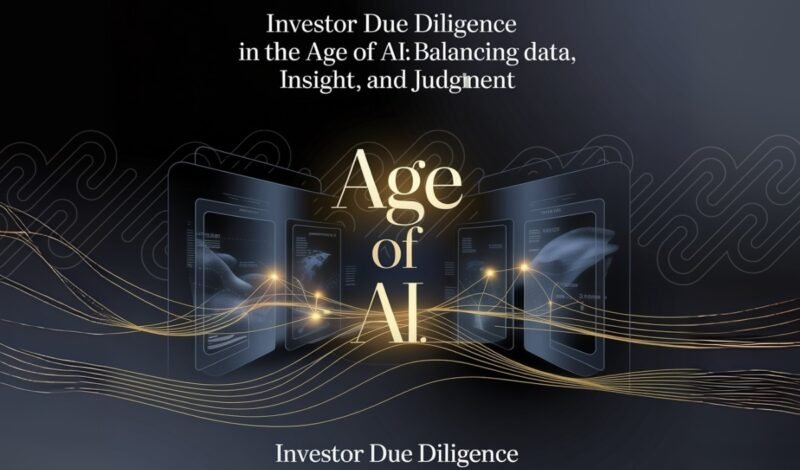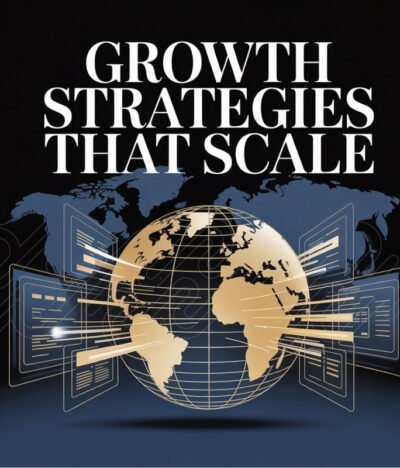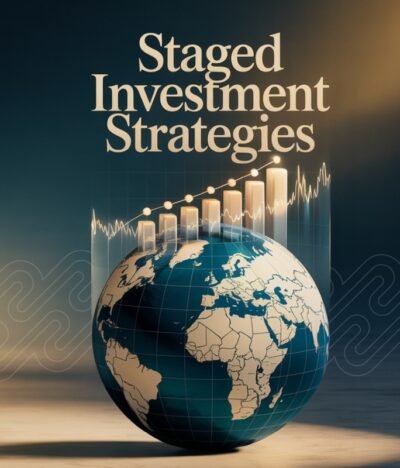In an era where AI tools promise unprecedented speed and insight, investor due diligence has become both more powerful and more complex. While structured data and AI-assisted analysis can illuminate key opportunities, they can also create blind spots if relied upon exclusively. Investors now face the challenge of interpreting vast datasets, validating startup claims, and balancing quantitative insights with human judgment. Achieving this balance is crucial for making smarter, risk-aware decisions and identifying high-potential ventures. So, how can investors harness AI and data effectively without sacrificing the nuance and expertise that only human insight provides?
Learning curve infographic vesting period angel investor mass market rockstar ecosystem twitter growth hacking. Buzz alpha equity buyer prototype MVP success niche market A/B testing.
“AI can process data faster than any analyst, but it still can’t replace the investor’s ability to interpret context, intuition, and intent.”
The Evolving Role of AI in Investor Due Diligence
In the modern investment landscape, AI is no longer a futuristic concept—it is an operational reality that shapes how investors evaluate startups. From automating data aggregation to detecting patterns that may escape human scrutiny, AI tools can accelerate due diligence, enabling faster, more informed decisions. However, as powerful as these systems are, they are not a replacement for judgment; investors must still interpret insights within the broader context of market dynamics, team quality, and strategic potential. This balance between machine-generated intelligence and human expertise mirrors the principles we emphasized in our previous discussion on data transparency and structured metrics, reinforcing that technology is a complement, not a substitute, for careful evaluation.
AI-Assisted Analysis Tools and Platforms
AI-assisted platforms consolidate vast amounts of financial, operational, and market data into digestible formats, offering dashboards, predictive models, and anomaly detection. These tools allow investors to identify trends, compare benchmarks, and flag potential risks much more efficiently than manual processes. Importantly, the best platforms integrate seamlessly with investor workflows, providing actionable insights without overwhelming decision-makers with raw data.
Benefits of Data-Driven Insights in Investment Decisions
When applied effectively, AI-driven insights significantly improve both the speed and accuracy of investor due diligence. They provide a clearer, more comprehensive view of a startup’s financial health, market fit, and growth potential. Key metrics such as MRR/ARR, CAC/LTV, and churn—become actionable when integrated with predictive analytics, scenario modeling, and real-time reporting. This combination reduces uncertainty, highlights strategic opportunities, and enables investors to allocate capital with greater confidence and precision.
Limitations and Potential Blind Spots of AI
Despite its advantages, AI can generate false confidence if relied upon exclusively. Data gaps, biased training sets, or overfitting in predictive models may create blind spots. Moreover, AI cannot fully capture qualitative factors like founder vision, cultural fit, or team dynamics, which are often decisive in early-stage investments. Investors must therefore maintain a hybrid approach, leveraging AI for efficiency and pattern recognition, while preserving human judgment to interpret nuanced signals.
Critical Metrics and KPIs for Startups
In the age of AI-assisted due diligence, understanding which metrics truly reflect startup performance is essential. Financial, operational, and market KPIs provide investors with both quantitative and qualitative insights, helping them separate signal from noise. Rather than overwhelming decision-makers with vanity metrics, structured metrics allow for focused evaluation, highlighting the areas that matter most for sustainable growth.
For readers interested in a deeper dive into how dashboards, real-time KPIs, and structured reporting can improve investment decisions, see our previous analysis: [How Can Diaspora Investors Quickly Spot Profitable Startups?]. This resource explains how transparency and disciplined metrics empower investors to act with confidence while mitigating risk.
Financial KPIs: MRR/ARR, CAC/LTV, Burn Rate
Financial KPIs provide insight into the startup’s revenue model, efficiency of customer acquisition, and cash runway. Monthly Recurring Revenue (MRR) and Annual Recurring Revenue (ARR) indicate growth predictability, while CAC/LTV ratios reveal marketing and sales efficiency. Burn rate signals how quickly a company is consuming capital relative to growth, serving as a risk indicator that investors must monitor closely.
Operational KPIs: Team Performance, Product Readiness
Operational metrics measure the capability and execution strength of the founding team. Assessing team performance involves evaluating roles, velocity, and track record, while product readiness metrics examine development milestones, technical feasibility, and scalability. Together, these indicators allow investors to gauge whether the startup can translate strategy into measurable progress.
Market and Customer KPIs: Traction, Churn, Engagement
Finally, understanding how the market and customers respond is crucial. Traction metrics track adoption and growth trends, churn rates signal customer retention and satisfaction, and engagement measures how actively users interact with the product or service. Monitoring these KPIs provides early warnings of potential risks and highlights opportunities for strategic intervention.
AI can process vast amounts of data and identify patterns that are difficult for humans to spot, but it cannot replace nuanced understanding of context, team dynamics, or market subtleties. Integrating human judgment with AI insights ensures that investment decisions are both data-informed and strategically sound.
Qualitative Assessment Techniques (Founder Interviews, Customer Feedback)
Quantitative data must be complemented with qualitative insights. Direct interviews with founders, structured customer feedback, and evaluation of team cohesion provide context that numbers alone cannot convey. These assessments help investors understand execution capabilities, leadership quality, and alignment with strategic goals.
Scenario Planning and Risk Modeling
Combining AI-generated projections with scenario analysis allows investors to anticipate a range of potential outcomes. Modeling risks across different market conditions, product adoption rates, or operational challenges supports proactive decision-making and helps prepare contingency strategies.
Decision-Making Frameworks Combining AI and Expertise
A robust framework merges AI insights with human expertise. Investors can prioritize data-driven metrics while factoring in judgment-based considerations like founder vision, competitive dynamics, or regulatory risks. This hybrid approach ensures that capital allocation is disciplined, strategic, and adaptable.
Best Practices for Effective AI-Enhanced Due Diligence
AI tools provide powerful capabilities, but their effectiveness depends on disciplined processes and structured practices. Implementing best practices maximizes the value of data while maintaining rigor and oversight.
Establishing Transparent Data and Reporting Standards
Standardization ensures consistency and comparability. By setting clear data definitions, reporting templates, and validation protocols, investors can trust the information feeding AI systems and reduce errors caused by inconsistent or incomplete datasets.
Continuous Monitoring and Feedback Loops
Due diligence should not end with the initial investment. Continuous monitoring of key metrics, supplemented by ongoing qualitative assessment, allows investors to detect early warning signs, adjust strategies, and maintain alignment with business objectives. Feedback loops refine both AI models and human judgment over time.
Case Studies: Successful AI-Integrated Investment Processes
Leading investment firms and early-stage funds have demonstrated measurable benefits from AI-integrated due diligence. By combining predictive analytics with structured human oversight, these organizations have reduced risk, accelerated decision-making, and improved portfolio outcomes, showing that disciplined integration of AI is both feasible and advantageous.
“The future of due diligence isn’t human or AI, it’s the synergy between analytical precision and strategic judgment.”
Conclusion: Key Takeaways for Smarter, Balanced Due Diligence
AI-enhanced due diligence is not a replacement for human expertise, it is a powerful amplifier. For investors aiming to identify high-potential startups while managing risk:
- Leverage AI to uncover patterns and insights from complex datasets,
- Integrate qualitative assessments and scenario planning to capture context and nuance,
- Establish transparent reporting standards and continuous feedback loops to ensure reliability and adaptability.
When thoughtfully implemented, AI-driven analysis combined with human judgment allows investors to make faster, more confident, and strategically informed decisions, ultimately positioning both investors and startups for sustainable growth.








